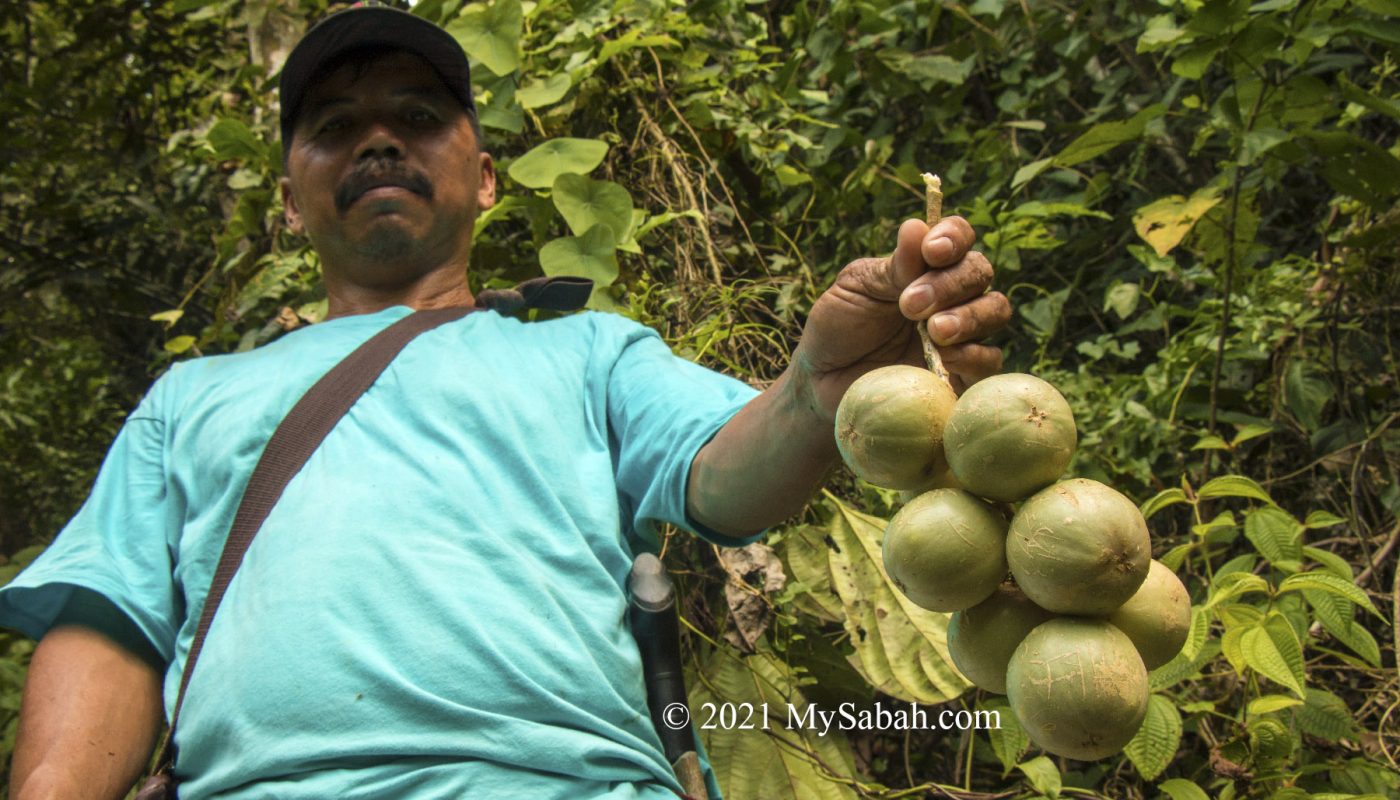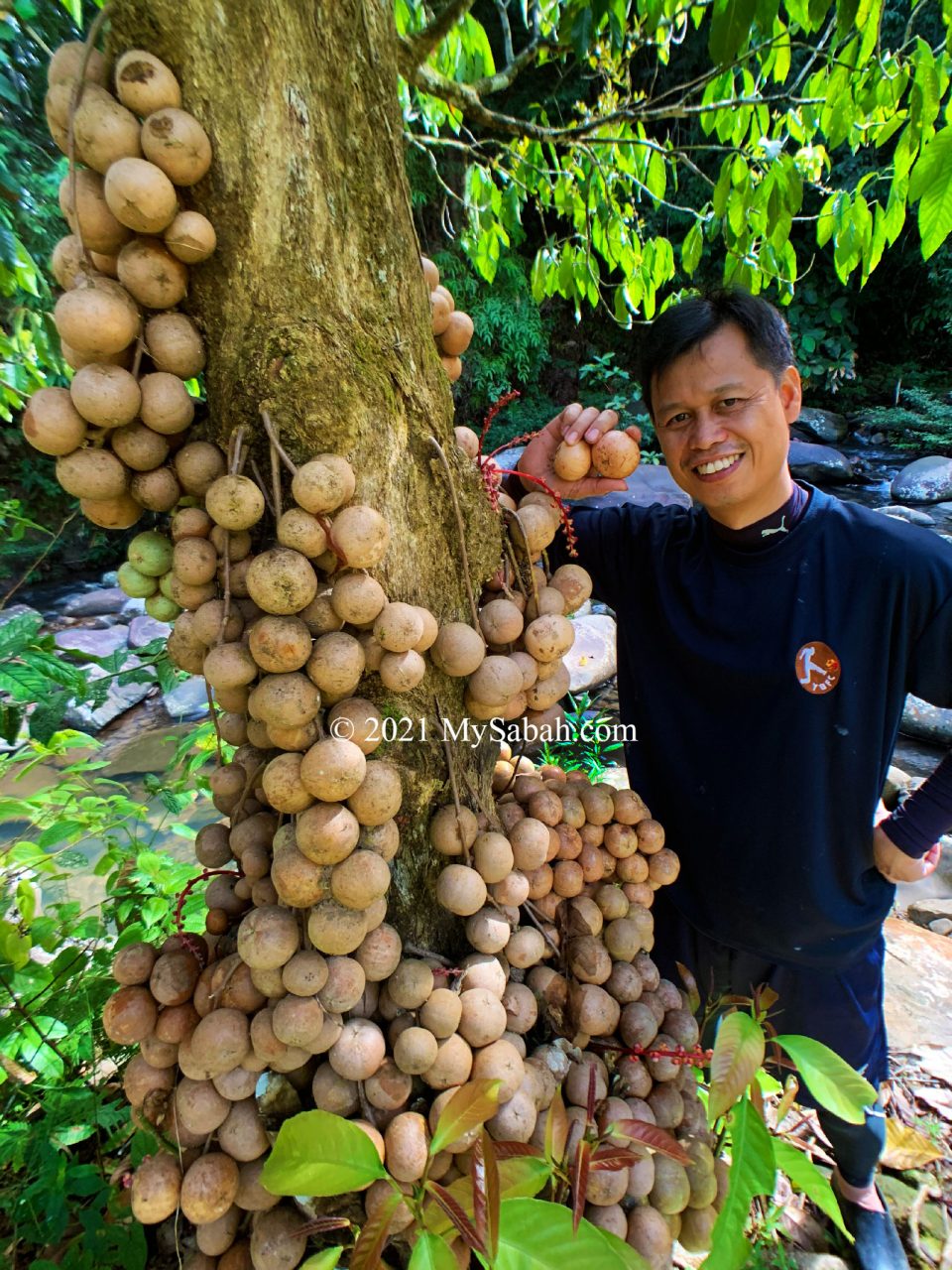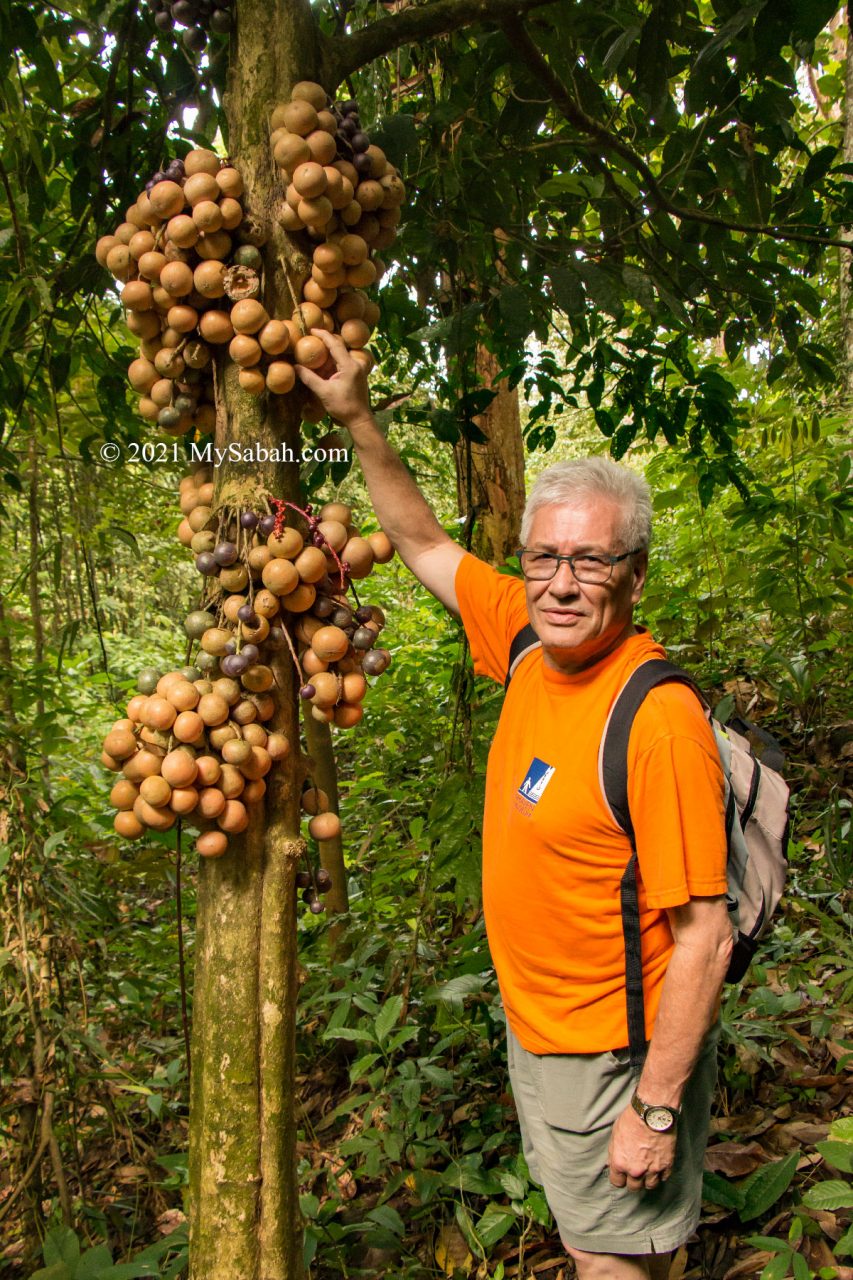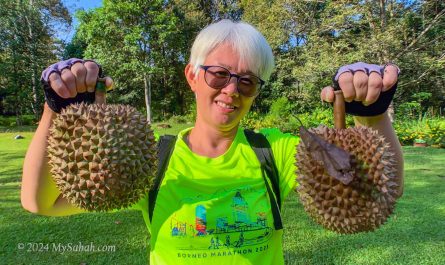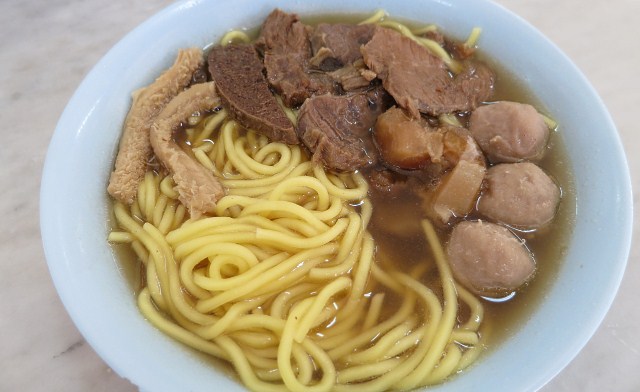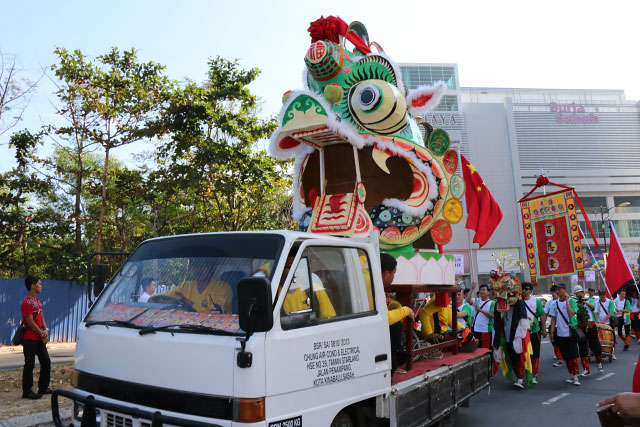Fruits are nutritious and tasty, mostly. Their fans are mainly divided into two camps: Sour vs Sweet loving, which side are you? I always crave for sour fruits such as bambangan, star gooseberries and bilimbi, so my friends like to tease me that I’m a pregnant guy. Liposu is another sour fruit that makes me salivates and has a special place among Sabahans, some even call it “Sabah Apple”.
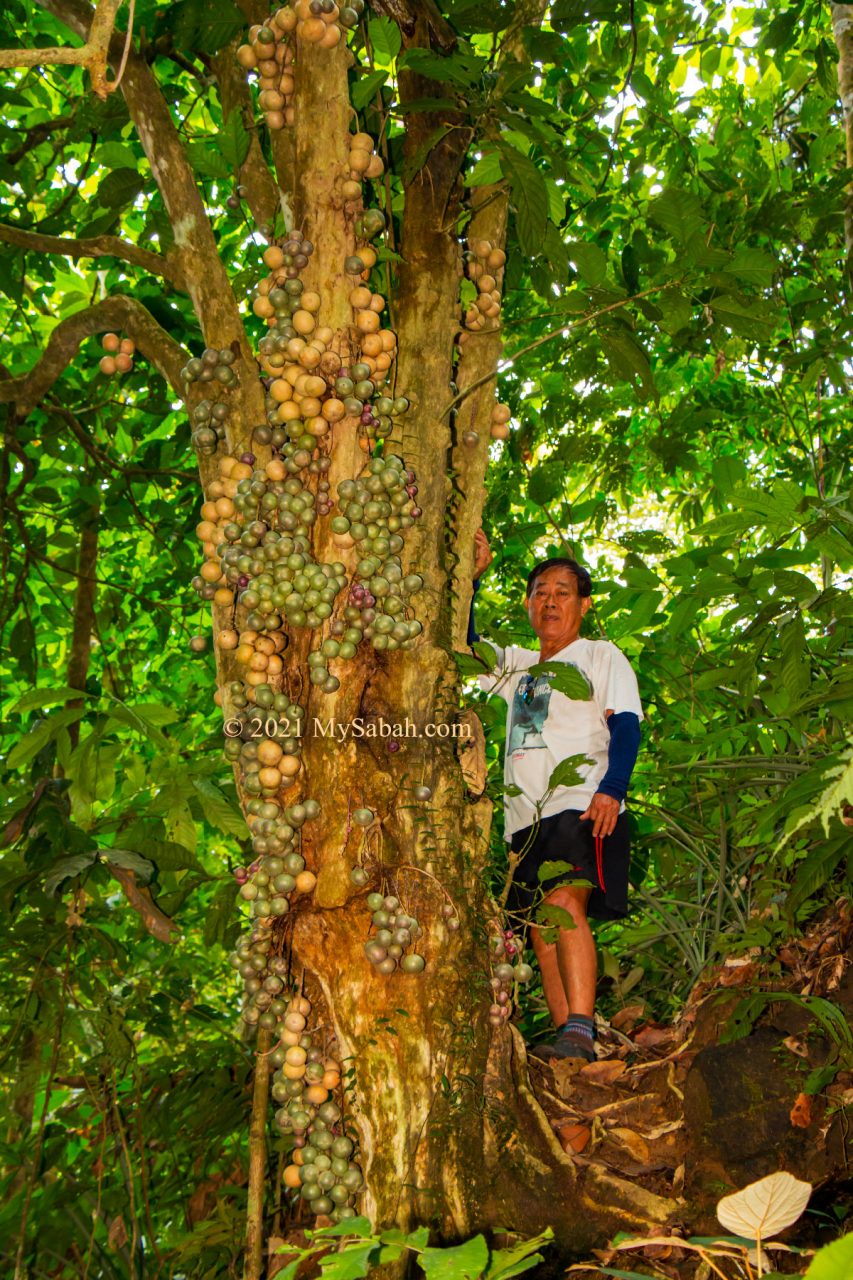
The scientific name of Liposu is Baccaurea lanceolata. It is widely distributed in Southeast Asia so it has many local names, for example, Borneo Ampusu, Asam pahong (Peninsular Malaysia), Lingsoe (Java), Kalampesu (Kalimantan), Lampaung (Brunei), Som Lok (Thailand), Lengsu (West Java), Tegeiluk (Sumatra), Liposu (Sabah), Lipasu, Lipaso. Limpasu seems like its official common name, but the term “Liposu” is used more frequently in daily conversation among Sabahans.
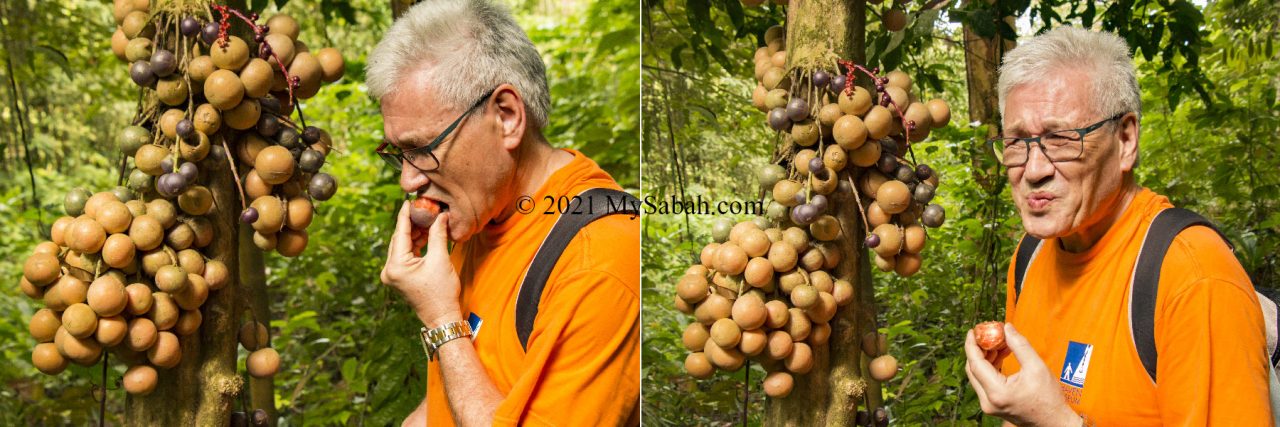
A fruiting liposu tree is a a spectacular sight, with hundreds of low-hanging fruit lining its trunk, the best definition for fruitful. Isn’t it exciting to see so many fruits? You don’t even need to climb up high to pluck the fruits. Even without a “wife tree” nearby, a male liposu tree can fruit on its own, but without the mesocarp. The fruits of liposu are in clusters of one to four seeded berries from globose to ellipsoid shape. The unripe fruits are purple or green in colour, and turn whitish yellow or light brown when matured.
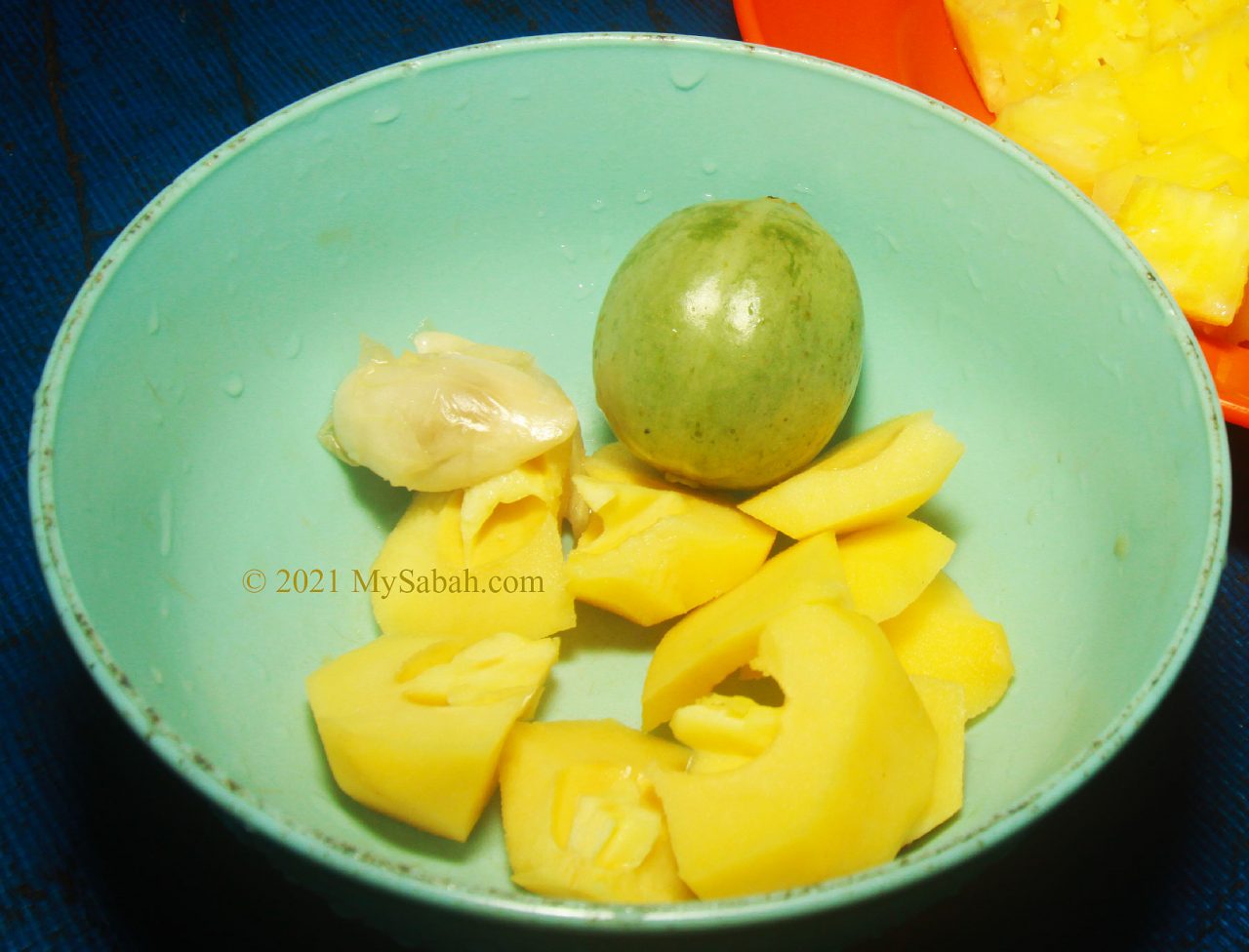
Liposu tree can grow up to 30 metres high, and found in lowland forest to sub-montane forests up to 1300 Metres in altitude. In Sabah, most villagers harvest liposu fruits in the neighbouring jungle. Liposu is seldom cultivated in orchards. It’s considered as a semi-wild and non-climacteric fruit with little commercial value.
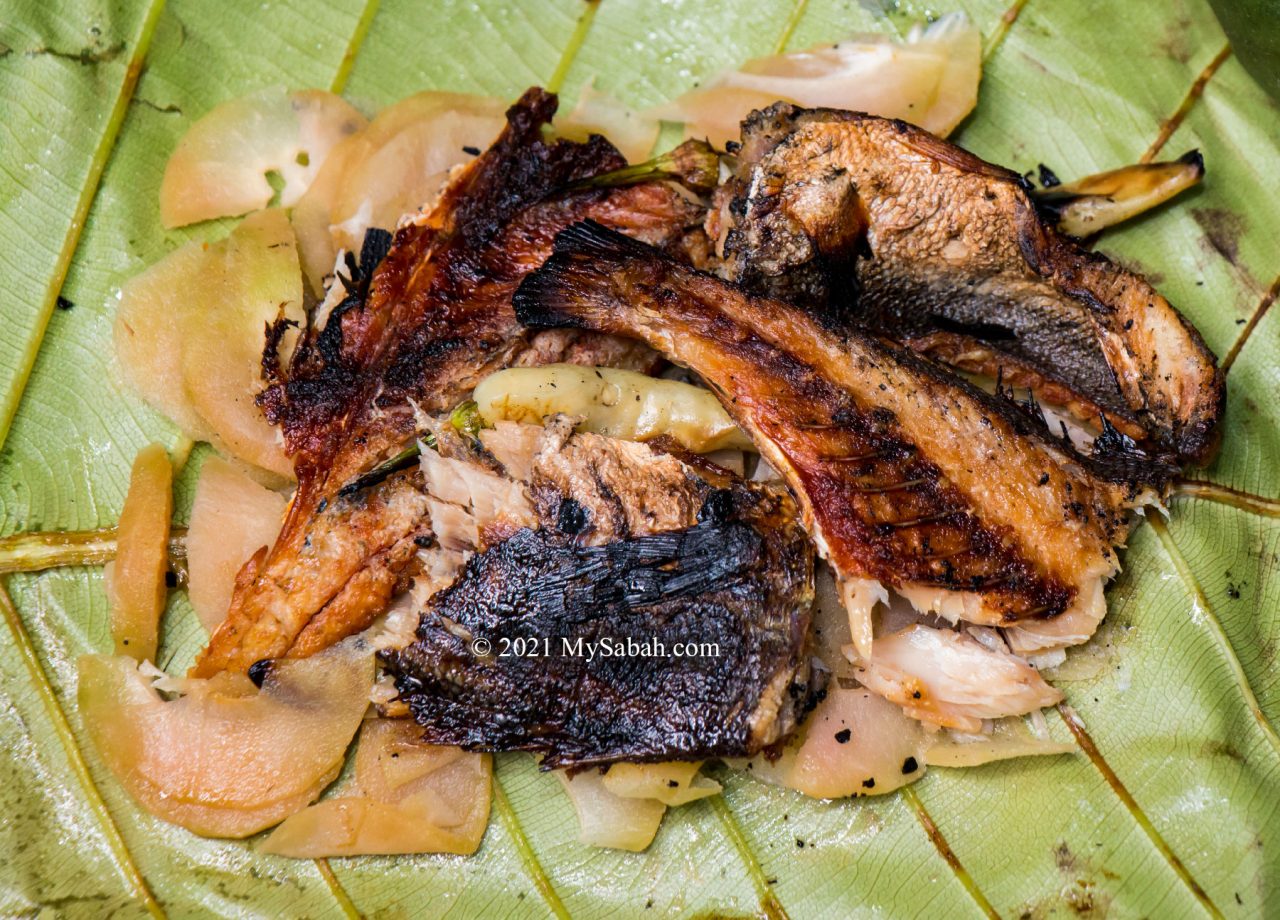
Did you see something? If liposu is a person, he would be someone who is willing to give a lot (of fruits) to others without asking anything in return. Though people don’t take care of him, he can flourish on his own. Such selfless and generous trait is extremely rare in the world of human as well as plant. That’s why the title says Liposu is the kindest tree of Borneo. Liposu must be a fruit plant originated from the Garden of Eden.
Liposu Fruits as Food
The thick skin and translucent white flesh of liposu are edible, and its taste is really sour with a bit of sweetness. Usually it’s eaten by being dipped into sugar or salt, or as an appetizer with rice. The video below shows you how to make special paste with liposu fruits.
Sabah natives, especially the Dusun pickles or makes it into sambal (a type of chili + shrimp paste), for cooking it with anchovies or salted fish, Capsicum annum (cili padi) and crushed shallot, garlic and ginger. They also consume liposu as fruit beverages and sun-dried fruit slices.
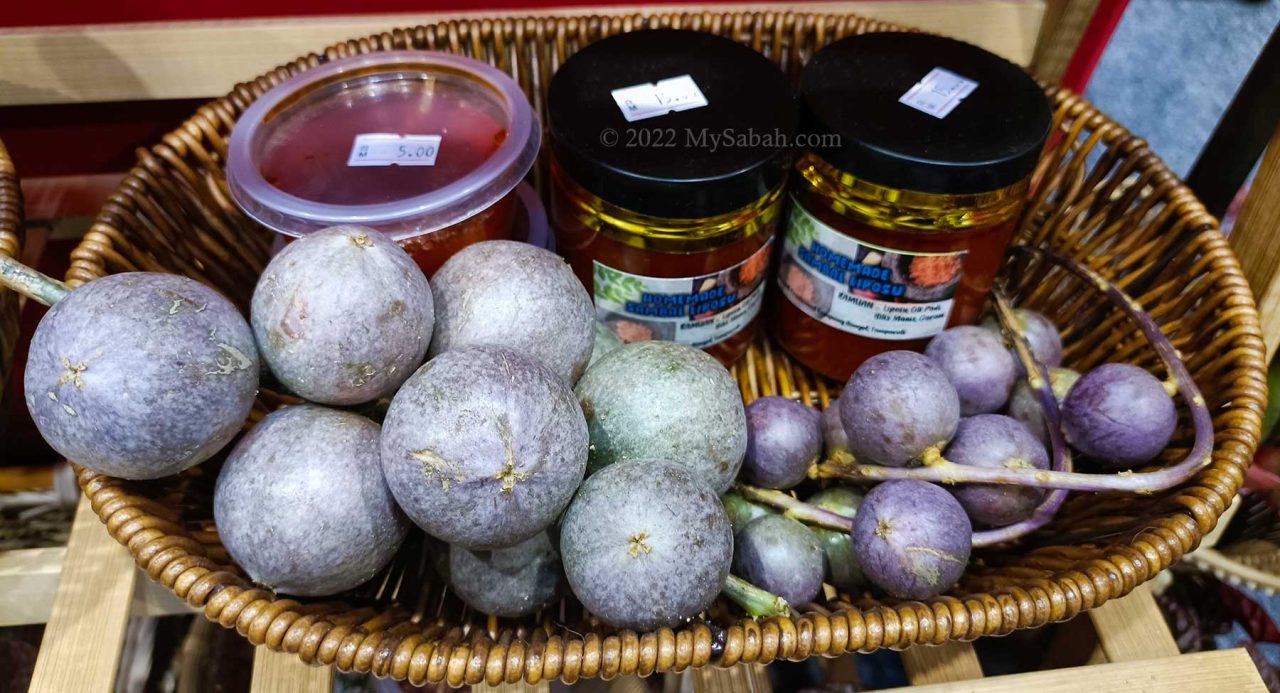
Liposu is rich in potassium (126 mg per 100g edible portion) and antioxidants. Surprisingly, though very sour, the vitamin C in the fruit is low (only 0.6mg per 100g edible portion) and getting less when it matures. Anyway, liposu fruits all year round and can serve as a reliable food source for birds, deer, monkeys, gibbons, orangutan, and other wildlife, so it can support conservation.
Other Uses of Liposu
Besides fruits, other parts of liposu can be utilised. Liposu is also commonly used as phytomedicine, skincare, and herbs in different places and communities, as shown in the following list:
- Bidayuh in Sarawak pounds the leaves and mixed it with water. This decoction is taken orally to treat stomach-ache.
- Murut people use the leaf to relieve abdomen pain.
- In Indonesia, liposu is made into face mask and powder form to treat acne.
- Banjar and Hamlets tribes in Kalimantan apply the pulverized fruits on their skin as natural sunscreen.
- To prevent drunkenness, Penan people pound the bark and drink the sap before consuming alcohol.
- Kelabit community consumes the shell of the fruit to cure diarrhea.
- Kalimantan people boil the fruit to make showering water that heals cold or fever.
- Dayak women rub their face with the pulp of liposu to remove black spots and to keep their skin healthy.
- The Iban uses the fruit of liposu as protection against charms and first consumed before paying house visits during Gawai.
- Other uses: treatment for headaches and body swellings, mouse repellent

Majority of studies on Liposu are carried out in Indonesia, we can learn from their researches to develop new liposu products and market them, to generate more income for rural communities.
My Thoughts
This section is not directly related to liposu but I think it’s fun to share a popular China story that is taught in almost every Chinese schools. This happened in Three Kingdoms Period of China about 1,800 years ago. Cao Cao, the warlord of Wei Kingdom, led his army marched across a vast dry-land. Without water supply, his soldiers were very thirsty and the weak ones even collapsed. Worried about the low morale among his men, Cao Cao hiked up to a hill to scan the surrounding but saw no sign of water.
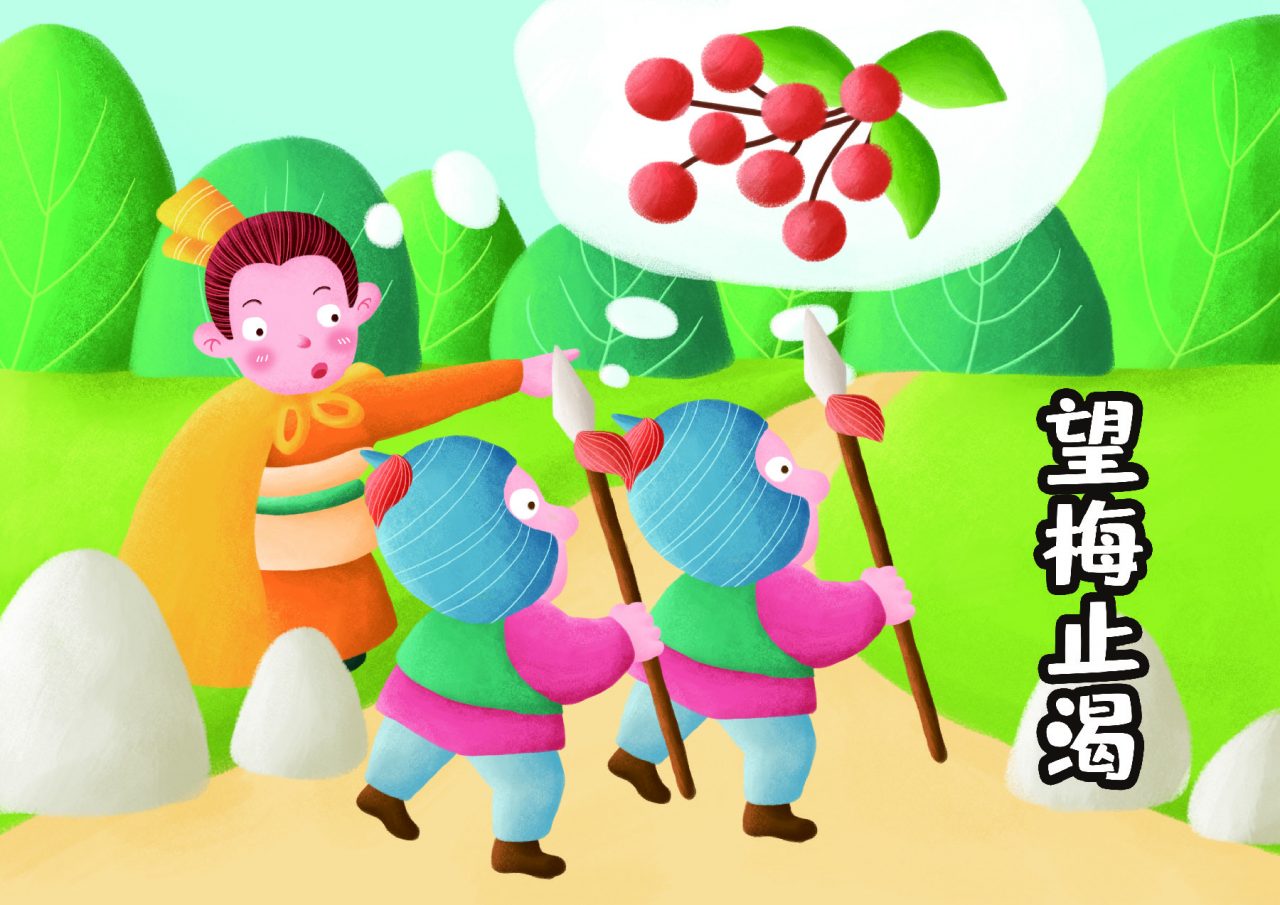
However, despite the hopeless situation, he told his dehydrated followers, “Worry no more, comrades. Waiting for us at the other side of the hill are a lot of trees with juicy plums!” As plum is sour in taste, hearing the word triggered the reflexes of soldiers, their mouth were watering and felt less thirsty immediately. Then they were motivated to move on and found water eventually, but no plum tree. This incident created a famous Chinese proverb “望梅止渴”, literally translated as stopping thirst by visualising plum.
Cao Cao is the biggest villain in three kingdoms story, so most historians call him a liar who used silly trick to deceive others with faked hope. If someone use this proverb to describe you, basically it means that you are a fool who comforts yourself with imaginary gain during a bad situation.
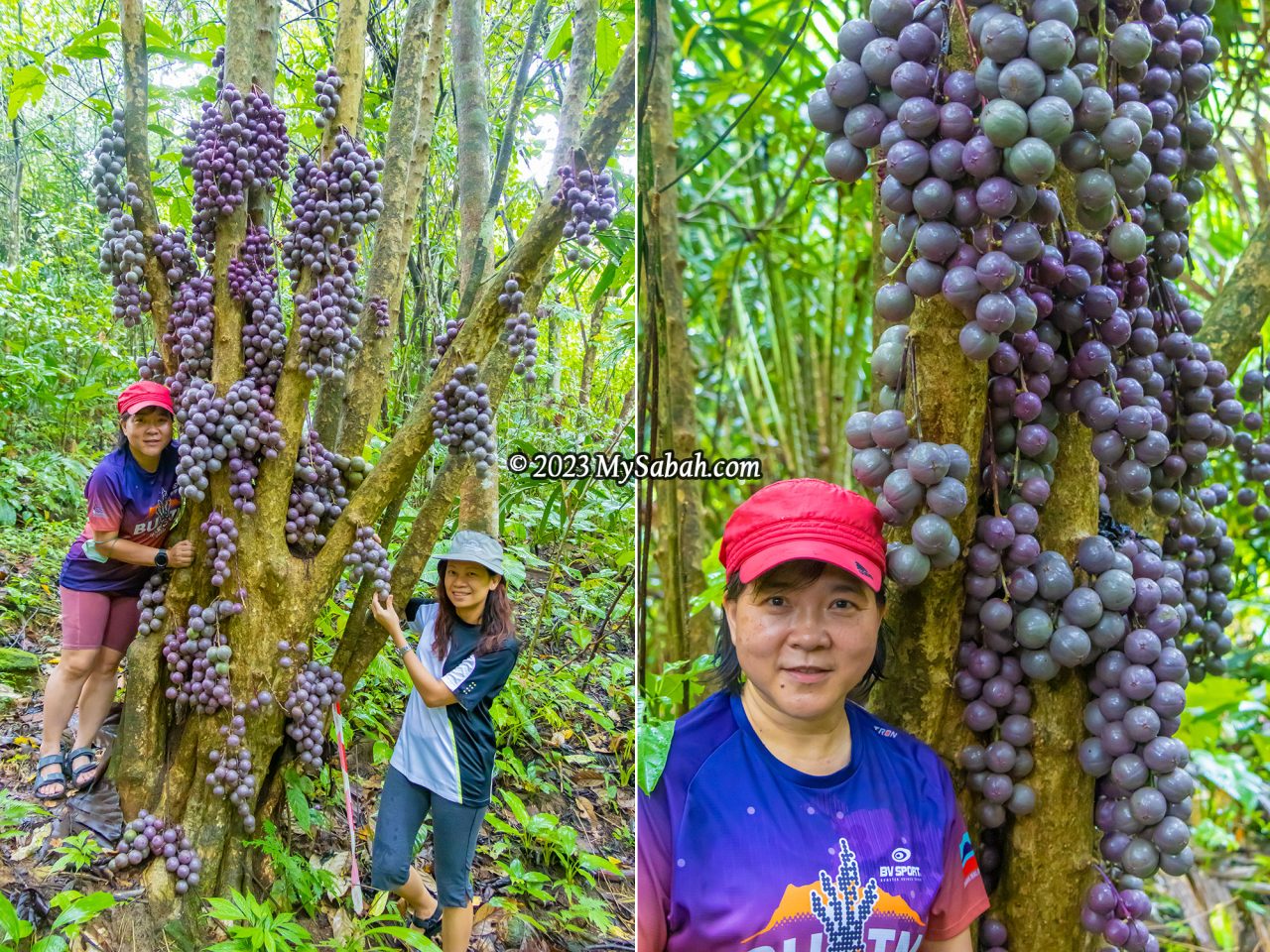
However, personally, I think what Cao Cao did was really smart. If he didn’t motivate everyone to carry on, nobody would survive. For this, I give a thumbs-up to his leadership because he knew how to boost everyone’s morale in a crisis by giving them hope (without spending a cent). Same to us, when there is nothing much we can do, probably the best way is to just wait it out and believe that there will be many liposu waiting for us in future.
So what’s your liposu? Do you use liposu for other purposes? Please share it in the comment section below. Let’s pray we will have a fruitful year ahead.
References
- “A Guide to Wild Fruits of Borneo” by Anthony Lamb, Publisher: Natural History Publications (Borneo), 2019
- Medicinal plants around us
- A review on benefits, potential and conservation of Baccaurea lanceolata
- Phytochemicals and Antioxidative Properties of Borneo Indigenous Liposu (Baccaurea lanceolata) and Tampoi (Baccaurea macrocarpa) Fruits
- Traditional and Pharmacological Reports of The Genus Baccaurea. A Review
- Komposisi nutrisi dan aktiviti antioksidan buah limpasu (Baccaurea Lanceolata)
- Limpasu, Menjaga Kesehatan Kulit
- Terpenoid Isolation from Baccaurea lanceolata Muell. Arg Fruit
- Menyusuri Sungai Karau
Photos taken in Sabah, Malaysia Borneo
